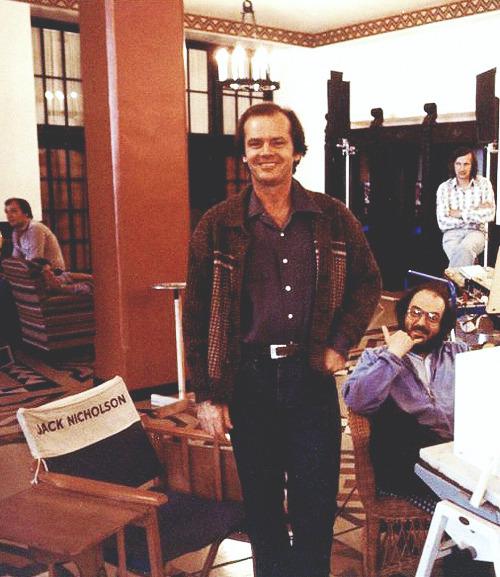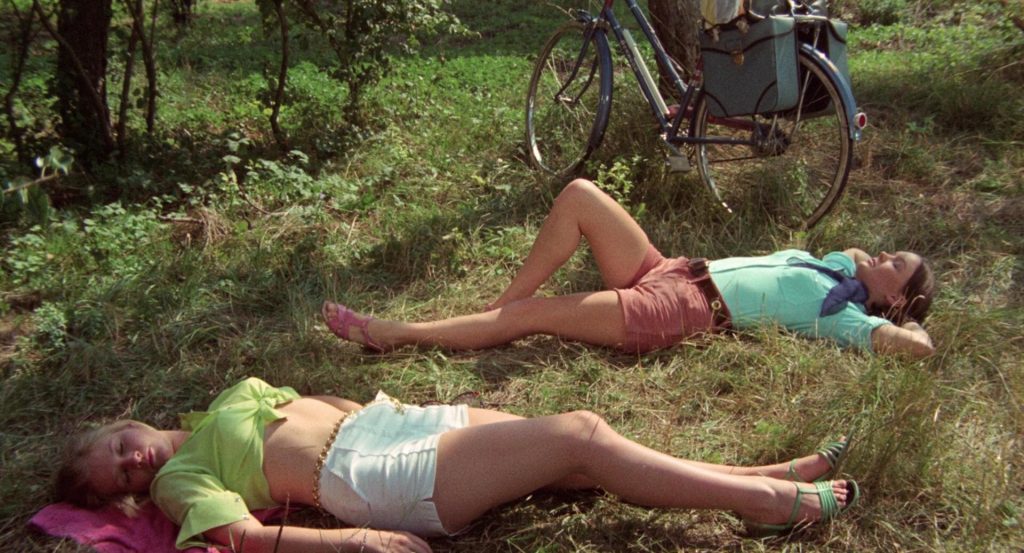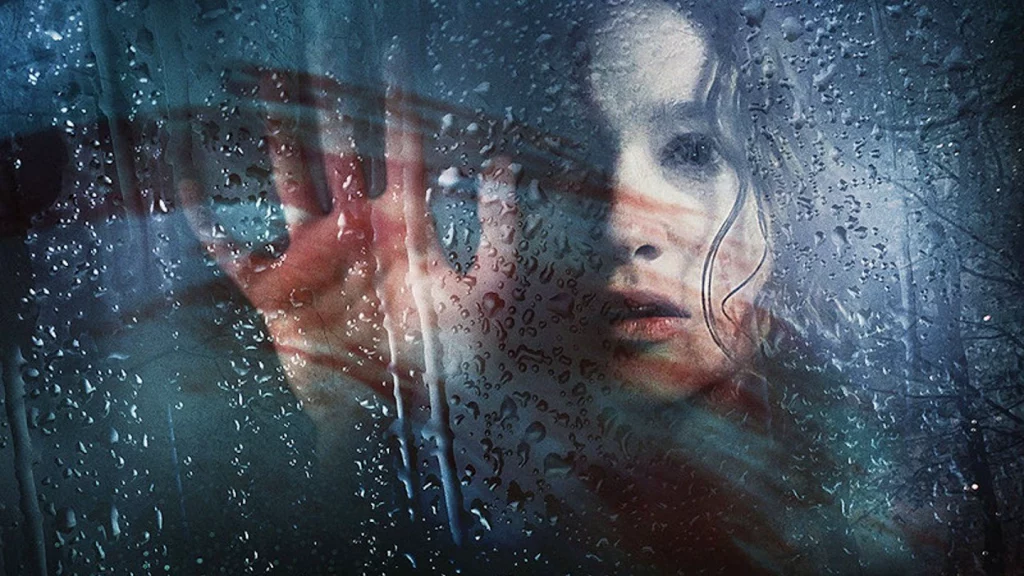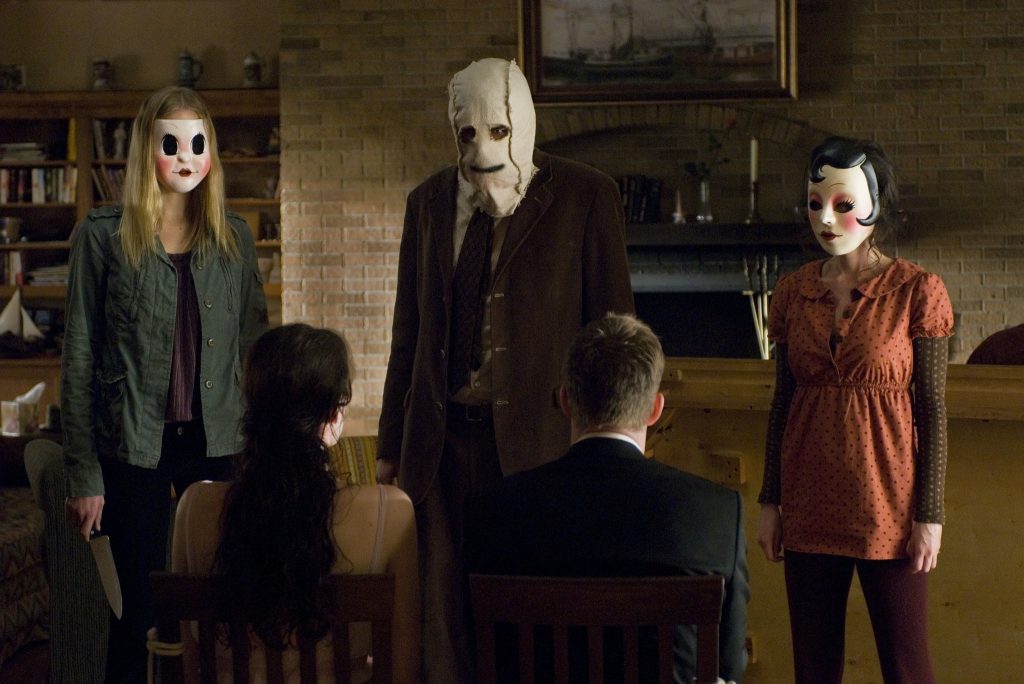It’s the predictable list that nobody asked for, but we thought we would put it together anyway. We have compiled our top 6 (that’s right 6) horror films of all time. We can’t wait for you to disagree with each selection.
THE SHINING
The film is as much an exploration of psychological torment as it is a horror story. Jack Nicholson’s portrayal of Jack Torrance sees him descend into madness, as he becomes more and more unhinged with each passing moment.
Kubrick’s visual storytelling is nothing short of hypnotic. The iconic carpeted hallways, the enigmatic Room 237, and the blood-soaked elevator are images that continue to haunt us long after the film ends. Each frame is a meticulous composition, filled with hidden meanings and subtexts that invite endless interpretation and analysis.
The film’s chilling score, composed by Wendy Carlos and Rachel Elkind, is one of dread. Its eerie, discordant melodies infuse the narrative with an otherworldly atmosphere that is as unsettling as it is memorable.

As the story progresses, Kubrick plays with the audience’s perception of reality, constantly blurring the line between supernatural horrors and the fragility of the human mind. “The Shining” challenges us to question what is real and what is imagined, leaving us in a state of perpetual uncertainty.
The film’s climactic sequence is an exercise in sensory overload and existential terror, a crescendo of haunting imagery and psychological torment that lingers long after the screen fades to black.
For me, The Shining is a journey into the darkest recesses of the human soul, a maddening exploration of isolation and the malevolent forces that lurk within. Stanley Kubrick’s “The Shining” is a cinematic masterpiece, a testament to the eternal power of dread and madness, and a story that will continue to haunt the collective subconscious for generations to come.
AND SOON THE DARKNESS
In the dimly lit realm of suspense and mystery, French cinema often shines with a nuanced brilliance, and “And Soon the Darkness” is no exception.
Set against the backdrop of a quaint, picturesque French village, the film instantly captivates with its breathtaking cinematography. The lush countryside, basking in dappled sunlight, paradoxically conceals the sinister undercurrents of the narrative. Dupont’s keen directorial eye transforms this idyllic locale into an unsettling character in its own right, a place where secrets fester beneath the charming facade.

The story follows two young women, played with impeccable poise by Isabelle Lacroix and Élise Moreau, as they embark on a leisurely bike tour through the countryside. The decision to venture into the seemingly tranquil, sun-dappled woods proves pivotal, setting the stage for a gripping tale of fear and survival.
Dupont’s direction is a masterclass in suspense, with every frame meticulously composed to draw the audience into the characters’ growing paranoia. The cinematography, courtesy of acclaimed lensman André Deschamps, lends a haunting beauty to the film’s most chilling moments. Shadows elongate, and eerie silence pervades, underscoring the impending danger.
Reviews of And Soon the Darkness are incredibly mixed and it is definitely a slow burner. But the first time I watched it, I fell in love with almost every aspect of it. I would highly recommend giving it a go, and sticking with it as the tension builds throughout.
THE ORPHANAGE
Set against a secluded and decaying orphanage on the windswept Spanish coastline, J.A. Bayona’s film revolves around Laura, portrayed with heartbreaking depth by the talented Belén Rueda, who returns to the orphanage with her family, intent on reopening it as a home for disabled children. The echoes of her traumatic childhood within these walls lay the foundation for a tale that seamlessly interlaces the poignant with the terrifying.
Bayona’s direction is a revelation in both storytelling and aesthetics. The cinematography, skillfully executed by the gifted Óscar Faura, captures the melancholic beauty of the desolate coastal landscape. He creates an atmosphere that is both inviting and foreboding, effectively luring the audience into the haunted embrace of the orphanage.

What distinguishes “The Orphanage” is its ability to evoke genuine emotional connection. As Laura embarks on her quest to uncover the secrets of the past, the audience is drawn into her desperate yearning for answers. Rueda’s performance is a revelation, a masterclass in conveying the complexities of maternal love, fear, and despair.
IN FEAR
In Fear is an absolute gem of a film, which I discovered a few years ago in the early hours of the morning. After hours of scrolling through several hundred channels, I came across In Fear and couldn’t turn it off.
Directed by the enigmatic and talented Jeremy Faulkner, this chilling tale is a triumph of tension, fear, and the human psyche. The story follows a young couple, played with captivating authenticity by Emily Wallace and Daniel Turner, as they embark on a seemingly simple road trip through the remote, mist-draped landscapes of the English countryside. This seemingly mundane premise is where the magic begins, and the audience is pulled into an ever-tightening story of fear and paranoia.

The beauty of “In Fear” lies in its restraint. Faulkner, with an uncanny understanding of suspense, gradually builds the tension, employing the ominous setting and an unsettling score to create an atmosphere so thick you can cut it with a knife. The absence of overt violence or gore is refreshing and It thrives on what is left unseen and unsaid, and the fear of the unknown lurking in the shadows.
THE CALIBRE
Directed by Alex Thornfield, this slow-burning chiller offers a fresh, enigmatic spin on age-old tales of the occult, making it a riveting addition to the genre.
Set in the English countryside, the film follows a pair of estranged siblings, brought together by a cryptic inheritance – an eerie, antique calibre with a history shrouded in dark legend. Their journey to unravel the mysteries behind the weapon becomes a haunting descent into a world of malevolent spirits and ancient curses.

The Calibre is not a film of jump scares or gratuitous violence. Instead, it focuses on psychological dread, gradually tightening the noose around the viewer’s imagination. The narrative’s ambiguity serves to invite contemplation and debate, and Thornfield’s meticulous storytelling offers clues and riddles that linger in the mind.
THE STRANGERS
The Strangers” stands as a chilling exemplar of primal fear. Directed by the talented Bryan Bertino, this taut thriller masterfully manipulates the simplest elements of terror to create an unrelenting symphony of dread.
From the opening scenes, Bertino’s film thrusts its audience into the heart of a seemingly ordinary suburban evening. A young couple, played with unnerving authenticity by Liv Tyler and Scott Speedman, seek refuge in a remote vacation home after a strained evening. The seemingly mundane quickly gives way to a crescendo of terror as they find themselves targeted by a trio of masked assailants.
What sets “The Strangers” apart is its unwavering commitment to minimalism. Bertino wisely relies on the fear of the unknown, capitalising on every creaking floorboard, every flickering light, and every distant sound to cultivate an atmosphere that is nothing short of paralysing. The absence of an elaborate backstory or overt gore amplifies the horror, making it all the more real and relatable.

The film’s cinematography, courtesy of the talented lensman Peter Johnson, serves as a conduit for the audience’s fear. The secluded cabin, surrounded by darkness, transforms into a character in itself, harbouring secrets and danger at every turn. Johnson’s use of shadow and limited visibility heightens the tension, inducing heart-pounding anxiety.
The minimalist yet evocative score, composed by the maestro Michael Danna, accentuates the suspense. Its eerie tones and unsettling silence accompany the harrowing ordeal, underscoring the helplessness of the characters.
The performances of Tyler and Speedman are commendable, as their characters’ initial tranquillity turns into palpable dread. The fear etched on their faces becomes an intimate mirror of the audience’s terror.
Bertino’s direction masterfully guides the narrative toward a harrowing climax. The relentless pursuit by the masked strangers culminates in a gut-wrenching crescendo, leaving the audience gasping for breath. The film’s closing moments, both haunting and ambiguous, linger long after the credits roll.
